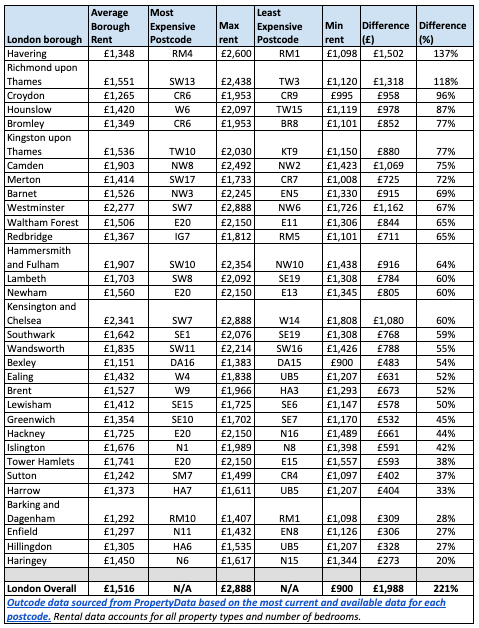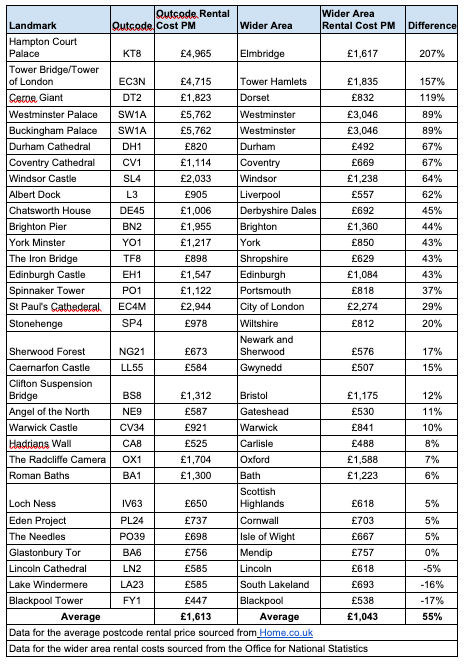Stamp duty holiday provides investment opportunities in these London postcodes
With Chancellor Rishi Sunak announcing plans for a stamp duty holiday, lettings and estate agent Benham and Reeves has researched the best areas to invest in London.
The research looks at the current average house process and rental yields of London postcodes. The results show that current rental yields sit at an average of 3.7% across the capital.
The postcode of SE17 appears to provide one of the best investment opportunities, with an average house price of £560,120 and an average rental yield of 4.1%. The stamp duty holiday will mean that buyers can save a maximum of £15,000 in this area.
SE17 covers parts of Lewisham, Southwark and Lambeth.
Other key areas to consider include SE11 in Kennington and SE15 in Peckham.
Director of Benham and Reeves, Marc von Grundherr, commented: “For far too long the government has squeezed the life out of the buy-to-let sector, and so it’s great to see that, finally, there has been some financial breathing room afforded to landlords.
“As the backbone of the UK rental space, landlords are a vital cog in the machine that so many rely on to put a roof over their heads.
“This momentary reprieve where the cost of stamp duty is concerned means that now is a great time to invest for those considering it, those looking to expand their portfolio, and for those that have exited the sector in recent years.
“Not only is there a considerable saving of thousands of pounds in stamp duty on even the most affordable investments, but we’re seeing above-average rental yields the length and breadth of the capital.”
| London postcodes with above-average rental yields sorted by the second home stamp duty tax saving | |||||
| Postcode districts | Average price | Current SDLY | Previous SDLT | SDLT Saving | Rental yield |
| SE17 | £560,120 | £19,810 | £34,810 | £15,000 | 4.1% |
| SE11 | £568,751 | £20,500 | £35,500 | £15,000 | 4.0% |
| SE15 | £522,849 | £16,828 | £31,828 | £15,000 | 4.0% |
| IG7 | £519,560 | £16,565 | £31,565 | £15,000 | 3.9% |
| SW9 | £526,690 | £17,135 | £32,135 | £15,000 | 3.9% |
| SE16 | £527,245 | £17,180 | £32,180 | £15,000 | 3.8% |
| E9 | £526,139 | £17,091 | £32,091 | £15,000 | 3.8% |
| SW2 | £515,004 | £16,200 | £31,200 | £15,000 | 3.8% |
| N7 | £560,678 | £19,854 | £34,854 | £15,000 | 3.8% |
| IG5 | £530,809 | £17,465 | £32,465 | £15,000 | 3.7% |
| SE5 | £498,293 | £14,949 | £29,863 | £14,915 | 4.2% |
| TW8 | £488,008 | £14,640 | £29,041 | £14,400 | 4.1% |
| E16 | £478,140 | £14,344 | £28,251 | £13,907 | 3.9% |
| SE8 | £468,404 | £14,052 | £27,472 | £13,420 | 4.0% |
| E7 | £466,197 | £13,986 | £27,296 | £13,310 | 3.7% |
| CR5 | £461,895 | £13,857 | £26,952 | £13,095 | 3.7% |
| E3 | £454,032 | £13,621 | £26,323 | £12,702 | 4.1% |
| NW9 | £434,162 | £13,025 | £24,733 | £11,708 | 4.0% |
| RM12 | £428,160 | £12,845 | £24,253 | £11,408 | 3.8% |
| DA16 | £424,285 | £12,729 | £23,943 | £11,214 | 3.8% |
| SE14 | £423,951 | £12,719 | £23,916 | £11,198 | 4.0% |
| N17 | £422,617 | £12,679 | £23,809 | £11,131 | 3.9% |
| IG2 | £421,367 | £12,641 | £23,709 | £11,068 | 3.8% |
| E15 | £419,352 | £12,581 | £23,548 | £10,968 | 4.5% |
| SE18 | £415,234 | £12,457 | £23,219 | £10,762 | 4.0% |
| HA1 | £402,216 | £12,066 | £22,177 | £10,111 | 3.9% |
| SE19 | £399,937 | £11,998 | £21,995 | £9,997 | 3.9% |
| SE13 | £396,240 | £11,887 | £21,699 | £9,812 | 4.0% |
| UB1 | £395,443 | £11,863 | £21,635 | £9,772 | 4.1% |
| UB8 | £393,758 | £11,813 | £21,501 | £9,688 | 3.9% |
| E6 | £390,117 | £11,704 | £21,209 | £9,506 | 4.4% |
| E12 | £389,800 | £11,694 | £21,184 | £9,490 | 4.4% |
| UB4 | £389,512 | £11,685 | £21,161 | £9,476 | 3.9% |
| UB2 | £379,871 | £11,396 | £20,390 | £8,994 | 4.0% |
| IG1 | £377,060 | £11,312 | £20,165 | £8,853 | 4.0% |
| TW4 | £376,553 | £11,297 | £20,124 | £8,828 | 3.9% |
| N18 | £376,507 | £11,295 | £20,121 | £8,825 | 3.9% |
| RM13 | £370,560 | £11,117 | £19,645 | £8,528 | 4.5% |
| SE20 | £368,119 | £11,044 | £19,450 | £8,406 | 3.9% |
| N9 | £365,764 | £10,973 | £19,261 | £8,288 | 4.0% |
| RM7 | £362,158 | £10,865 | £18,973 | £8,108 | 4.2% |
| E13 | £361,283 | £10,838 | £18,903 | £8,064 | 4.5% |
| SM6 | £360,418 | £10,813 | £18,833 | £8,021 | 4.0% |
| UB3 | £359,372 | £10,781 | £18,750 | £7,969 | 4.2% |
| UB7 | £357,537 | £10,726 | £18,603 | £7,877 | 4.3% |
| RM6 | £355,199 | £10,656 | £18,416 | £7,760 | 4.3% |
| TW13 | £350,305 | £10,509 | £18,024 | £7,515 | 4.0% |
| EN8 | £349,893 | £10,497 | £17,991 | £7,495 | 3.8% |
| SM2 | £349,380 | £10,481 | £17,950 | £7,469 | 3.9% |
| RM3 | £347,880 | £10,436 | £17,830 | £7,394 | 4.6% |
| TW14 | £347,231 | £10,417 | £17,778 | £7,362 | 4.1% |
| EN3 | £347,078 | £10,412 | £17,766 | £7,354 | 4.3% |
| CR0 | £345,101 | £10,353 | £17,608 | £7,255 | 4.0% |
| UB5 | £341,658 | £10,250 | £17,333 | £7,083 | 4.3% |
| DA14 | £334,090 | £10,023 | £16,727 | £6,705 | 4.4% |
| SE2 | £333,535 | £10,006 | £16,683 | £6,677 | 4.3% |
| SE25 | £331,157 | £9,935 | £16,493 | £6,558 | 4.1% |
| RM8 | £326,145 | £9,784 | £16,092 | £6,307 | 4.9% |
| RM9 | £323,390 | £9,702 | £15,871 | £6,170 | 5.1% |
| RM10 | £319,782 | £9,593 | £15,583 | £5,989 | 5.2% |
| DA8 | £300,492 | £9,015 | £14,039 | £5,025 | 4.6% |
| IG11 | £296,415 | £8,892 | £13,713 | £4,821 | 5.5% |
| DA1 | £290,581 | £8,717 | £13,246 | £4,529 | 4.5% |
| SE28 | £275,498 | £8,265 | £12,040 | £3,775 | 5.0% |
| London Average | £485,794 | £14,574 | £28,864 | £14,290 | 3.70% |
| House price and rental data sourced from PropertyData |







